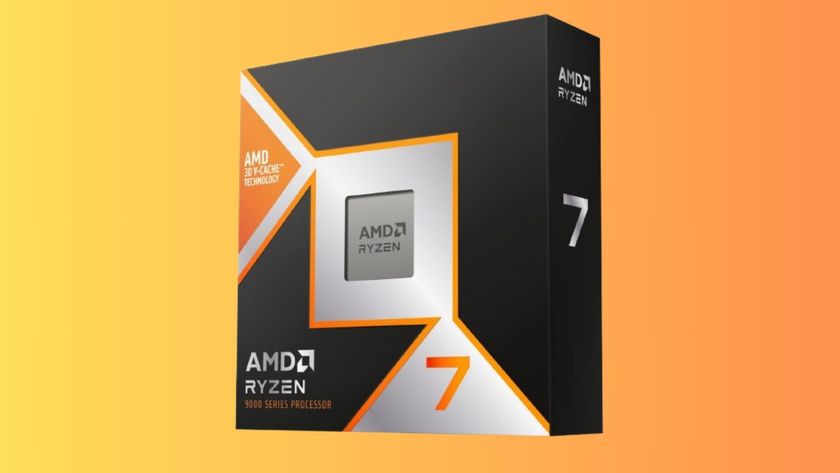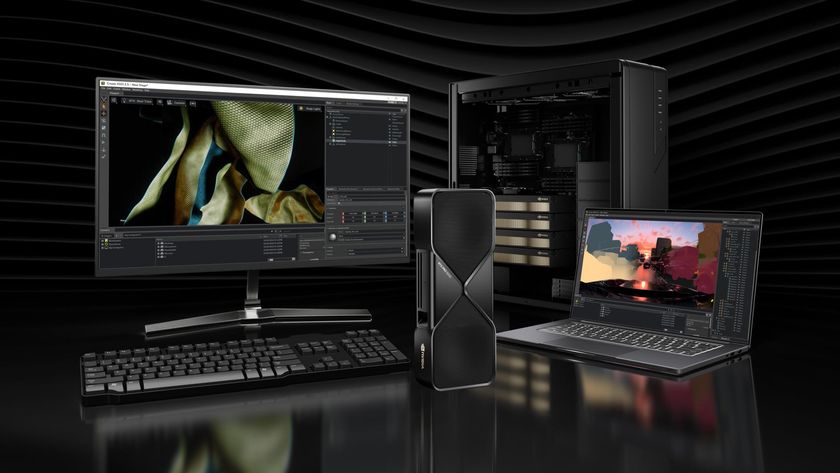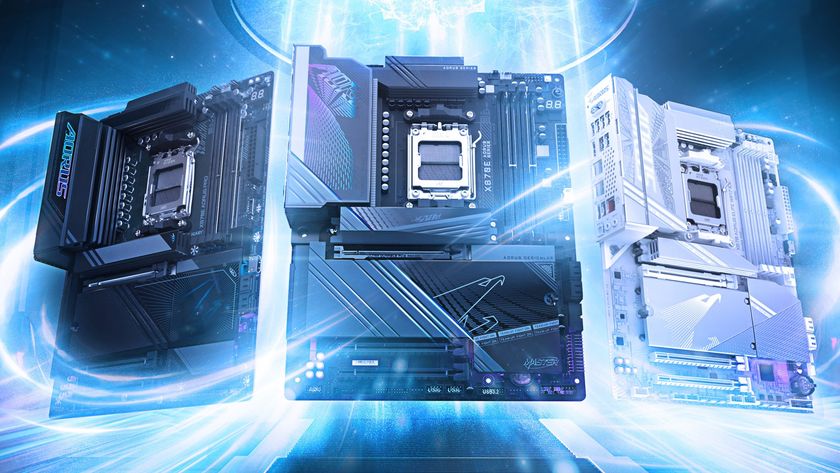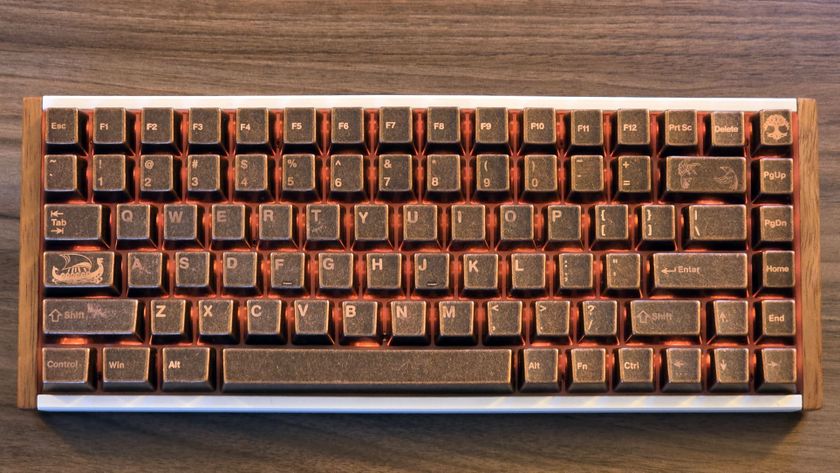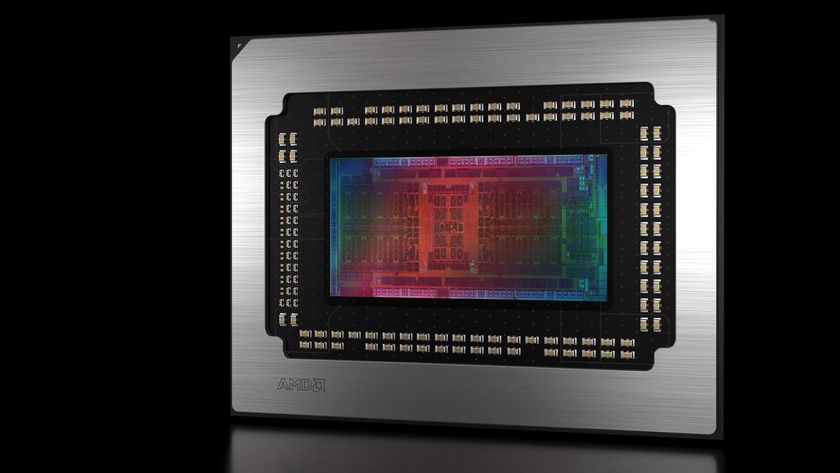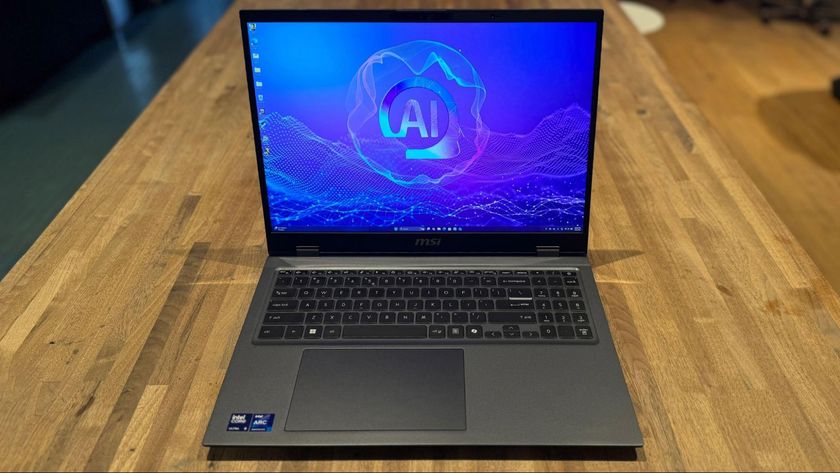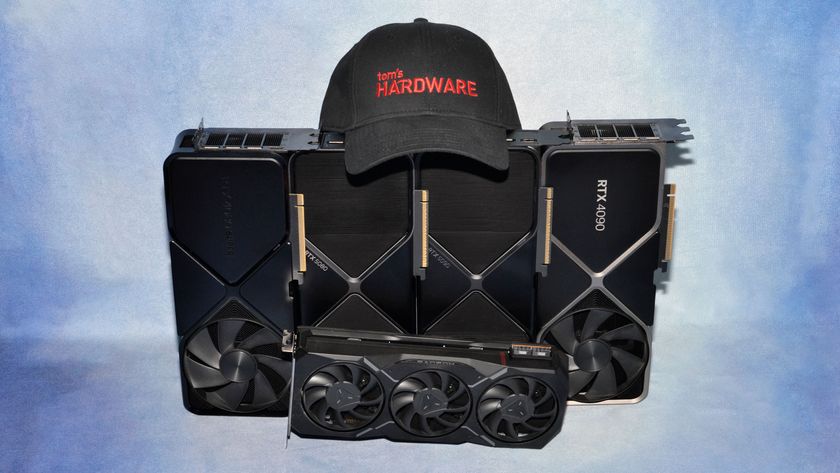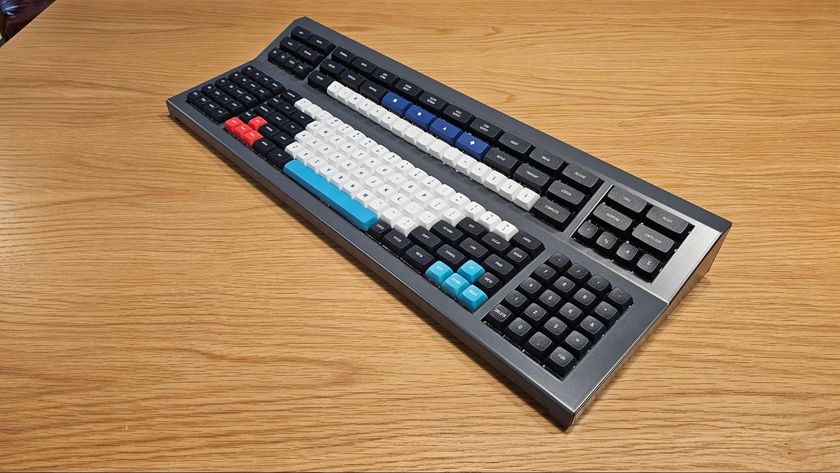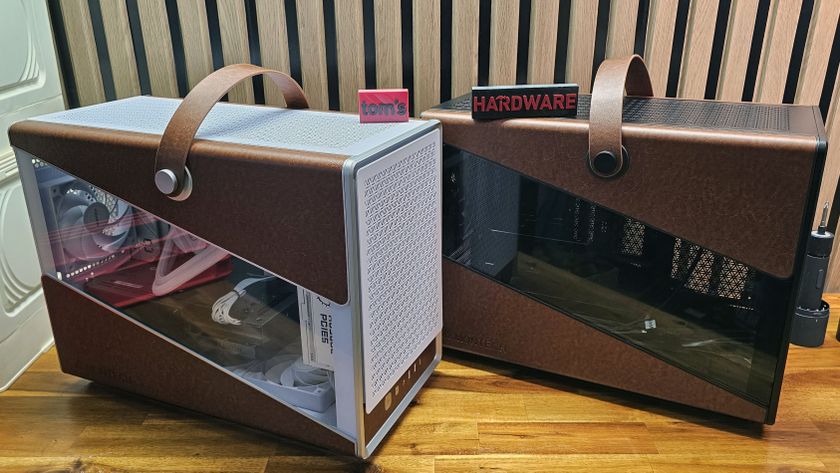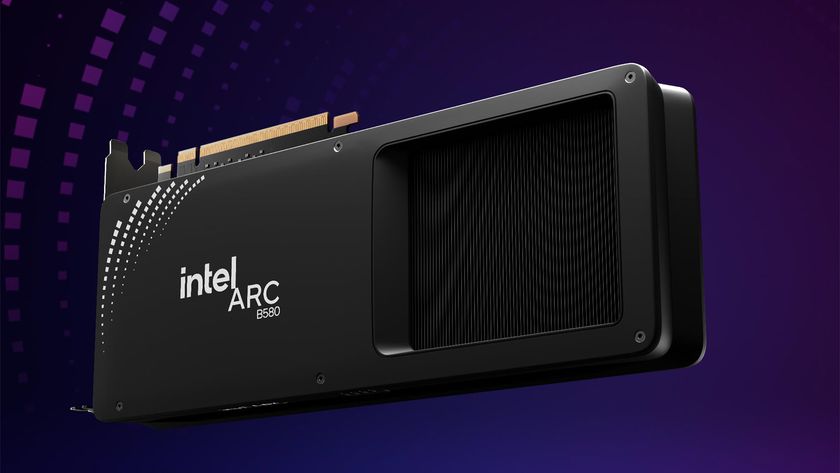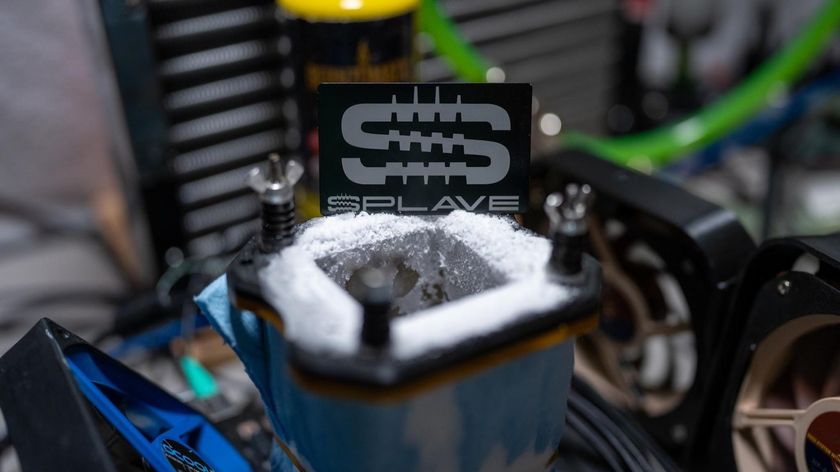Intel Kaby Lake Core i7-7700K, i7-7700, i5-7600K, i5-7600 Review
Z270, Optane, Overclocking Tools, And HD Graphics 630
200-Series Chipsets and Optane Ready Support
The 200- and 100-series chipsets support both Kaby Lake and Skylake processors. This dual compatibility might create an interesting dilemma for enthusiasts who purchase a Skylake processor, or for those who are interested in a new Z270 motherboard.
Intel's 200-series portfolio includes Z270 with overclocking support for enthusiasts, H270 and B270 without overclocking for mainstream desktop and business use, and the business-specific Q270 and Q250 chipsets. These chipsets include limited improvements that build upon the 100-series feature set. Realistically, you're going to have a hard time finding a reason to upgrade if you already own a Z170-based motherboard.





Z170's features carry over to Z270. You get dual-channel memory support with up to two DIMMs per channel, six SATA 6Gb/s ports, up to 10 USB 3.0 ports, and a maximum of 14 total USB 2.0 and 3.0 ports. Intel also updates Management Engine (ME) 11.6 for all chipsets. The Z270, H270, and Q270 platforms support on-board RAID 0, 5, and 10, although throughput is limited by the Direct Media Interface (DMI) 3.0 connection between the CPU and PCH.
| Header Cell - Column 0 | Z270 | Z170 | H270 | H170 | B250 | B150 | Q250 | Q270 |
|---|---|---|---|---|---|---|---|---|
| Chipset PCIe 3.0 Lanes (Up To) | 24 | 20 | 20 | 16 | 12 | 8 | 14 | 24 |
| HSIO Lanes | 30 | 26 | 30 | 22 | 25 | 18 | 27 | 30 |
| Processor PCIe 3.0 Lanes Configuration | 1x16 or 2x8 or 1x8+2x4 | 1x16 or 2x8 or 1x8+2x4 | 1x16 | 1x16 | 1x16 | 1x16 | 1x16 | 1x16 or 2x8 or 1+8+2x4 |
| DMI | 3.0 | 3.0 | 3.0 | 3.0 | 3.0 | 3.0 | 3.0 | 3.0 |
| SATA 3.0 (6Gb/s) Ports (Up To) | 6 | 6 | 6 | 6 | 6 | 6 | 6 | 6 |
| USB 3.0 Ports | Up to 10 | 10 | 8 | 8 | 6 | 6 | 8 | Up to 10 |
| Total USB Ports (2.0 + 3.0) | 14 | 14 | 14 | 14 | 12 | 12 | 14 | 14 |
| Intel RST PCIe 3.0 Ports | 3 | 3 | 2 | 2 | 1 | 1 | 1 | 3 |
| Overclocking | Yes | Yes | No | No | No | No | No | No |
| Independent Display Support | 3 | 3 | 3 | 2 | 3 | 3 | 3 | 3 |
| System Memory Support | DDR4/3L | DDR4/3L | DDR4/3L | DDR4/3L | DDR4/3L | DDR4/3L | DDR4/3L | DDR4/3L |
| System Memory Channels/DPC | 2/2 | 2/2 | 2/2 | 2/2 | 2/2 | 2/2 | 2/2 | 2/2 |
The PCH serves as a communications hub for many key features, and Intel continues using the same ~4GB/s DMI 3.0 point-to-point link between it and the CPU. Intel does add four chipset PCIe lanes to Z270, H270, and B250. Motherboard vendors also receive a more generous helping of HSIO (High Speed I/O) lanes, which they use to carve out various features, such as extra SATA, Ethernet, USB, and M.2 functionality. Z270-based boards enjoy an increase from 26 to 30 lanes, while the H270 makes a much larger jump from 22 to 30.
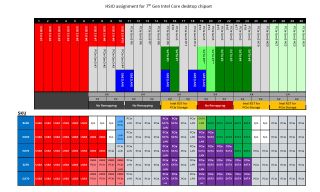
The H-series chipset traditionally serves as a watered down version of the Z-series model due to lesser HSIO lane allocations and a lack of overclocking support. But the jump from 22 to 30 HSIO lanes will enable broader feature sets, such as increased storage and connectivity options. Intel allows motherboard vendors to use a x8 connection to a device through the use of a third-party bridge chip. That could even allow for an additional PCIe slot. It is noteworthy that the x8 arrangement will suffer from limited DMI 3.0 throughput.
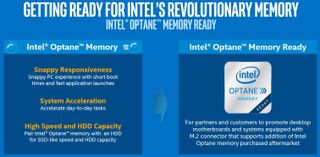
Intel's "Optane Memory Ready" branding is the elephant in the room, and though the company isn't ready to address it yet, it's eager to start marketing the feature. Optane is Intel's brand name for its 3D XPoint-based products, which it promises will usher in the era of persistent memory. Optane should slot into the price and performance range between NAND and DRAM, so it will be much faster than existing storage devices, but also more expensive. Optane is even fast enough to serve as a layer of system memory that slots in as a DIMM. It appears Intel has delayed its Optane DIMMs indefinitely, so 3D XPoint will debut on the Kaby Lake platform as a storage caching device.
We've also spotted the AIC (Add-In Card) Optane SSD, which rides in a normal PCIe slot. Intel's briefing materials indicate the company will bring an M.2 variant to market first, though. The Optane M.2 SSD will be available in 2H'17 as a caching front-end to accelerate boot times and application launches. Intel's RST (Rapid Storage Technology) driver will likely be responsible for detecting frequently-accessed "hot" data and promoting it to the Optane NVMe SSD.
Stay On the Cutting Edge: Get the Tom's Hardware Newsletter
Get Tom's Hardware's best news and in-depth reviews, straight to your inbox.
Intel has offered various caching options in the past, none of which garnered much favor from enthusiasts. Optane may not do much to change this situation. Caching implementations are invariably susceptible to latency spikes due to out-of-cache data access, and the frequency of "stuttery" performance usually has a direct correlation to the amount of capacity available for caching. The M.2 Optane SSDs will likely come in 16GB and 32GB sizes, which isn't enough space to use as a boot device. It also comes up short for caching heavy multitasking environments.
Optane caching SSDs will require the 200-series chipset and a Kaby Lake-based Core i3 or better CPU. If you upgrade to Kaby Lake with a 100-series motherboard, you will not be able to utilize the caching feature. The chipset requirement also implies that the speedy Optane is constrained by the DMI 3.0's limited throughput.
BCLK Aware Voltage/Frequency Curve And AVX Offset Ratio
Intel promotes its BCLK-aware Voltage/Frequency curve tool as a useful utility for overclocking, but provides little detail about its inner workings. Intel designed the software to increase overclock stability and reliability by optimizing voltage fed to the processor based on BCLK frequency. We have had little success with BCLK-based overclocking using our locked samples, so it may have limited use. We hope to learn more soon, though.
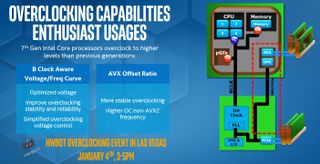
The adjustable Advanced Vector Extension (AVX) offset ratio debuted on the Xeon line-up as a locked parameter. Broadwell-E marked the first time Intel offered it as an unlocked and adjustable parameter, and Kaby Lake brings the feature to mainstream overclocking.
AVX workloads are power-hungry, and thus generate far more heat than non-AVX workloads. This ratio allows the processor to reign in clock rates when it executes AVX instructions, in turn allowing you to dial in higher overclocks for non-AVX workloads. The MSI Z270 Gaming M7 allowed us to define an AVX offset ratio and use it alongside our manually-adjusted Vcore settings.
Intel HD Graphics 630 - Gen9.5 Brings 4K To The Fore
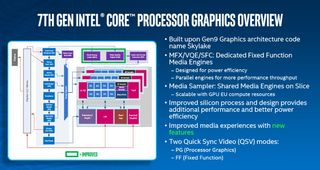
Intel replaced the HD Graphics 530's Gen9 Media Architecture with Gen9.5 for HD Graphics 630. The new architecture is similar to Gen9, so it has the same design that features subslices with 8 EUs each (totaling 24 EUs in a GT2 configuration), along with support for all the previous features. Intel also changes the branding from Iris Pro to Iris Plus for its eDRAM-infused offerings.
HD Graphics 630 gets the same 350 MHz base and 1150 MHz dynamic clock rates, with revamped MFX (decode/encode) and VQE engines. The MFX (Multi Format Codex) engine supports legacy VP8 and AVC codecs, along with HEVC 10-bit decode/encode, VP9 8/10-bit decode, and VP9 8-bit encode (no support for VP9 10-bit encode). The VQE engine also enjoys the addition of HDR and Wide Color Gamut support.
The optimized fixed-function hardware eliminates Skylake's Gen9 hybrid CPU/GPU processing strategy during HEVC Main10 Decode and VP9 8-bit decode operations, thereby reducing CPU overhead and the associated power consumption. The Gen9.5 engine supports up to eight simultaneous 4Kp30 HEVC and AVC streams, along with real-time 4Kp60 HEVC decode operations at 120 MB/s.
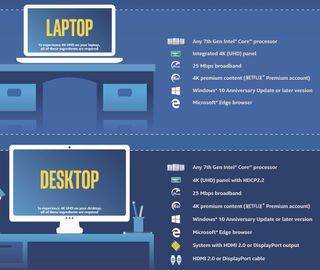
These advances are great for the mobile space, but might have limited utility for enthusiasts with add-in graphics cards. There is an odd conundrum with 4K Netflix streaming. Netflix requires PlayReady 3.0 DRM and hardware-based 10-bit HEVC decoding, which is a combination currently only available with Windows 10 and Kaby Lake processors. Skylake and its predecessors don't support 10-bit HEVC decode. Nvidia's 10-series GPUs support both technologies, but cannot stream 4K yet.
While 4K video streaming is still in the teething stage, onerous DRM and requirements like HDCP 2.2 could be serious limitations. The string of prerequisites, which also includes the Windows 10 Anniversary Update and HDMI 2.0 or DisplayPort, is confusing enough for "regular" users that Intel created an infographic to help navigate the 4K minefield. Streaming 4K may give some mainstream users a reason to upgrade their desktops, but the narrow stream of content providers will likely hamper adoption.
Windows 10 Users Need Only Apply
Microsoft announced earlier this year that it would not support Kaby Lake and Zen processors with pre-Windows 10 operating systems. The company indicated that it would not update drivers for older operating systems to support the new hardware.
Based on our initial testing with MSI's Z270 Gaming 7 motherboard, we can confirm that HD Graphics 630 does not function correctly under Windows 7 and 8.1. Both operating systems install generic drivers for the display adapter, even after applying the latest drivers and updates, so many core features remain unavailable. We also experienced stability issues with Windows 7 that might even negate using an add-in GPU as a workaround.
This may be a minor concern to enthusiasts who already keep up to date. But the estimated 47% of worldwide computer users who still use Windows 7 (and the 8% on Windows 8.1) need to account for the cost of Windows 10 as part of a Kaby Lake upgrade. Microsoft allows a limited number of component changes before invalidating your OS license, so it is a valid concern if you plan to upgrade an existing system with a 100-series chipset. It's noteworthy that Microsoft's official mainstream support for Windows 7 expired in January 2015, but the company has obviously not convinced a majority of users to upgrade. Interestingly, Microsoft still offers "mainstream support" for the unpopular Windows 8 until Jan 2018, though that's misleading since it isn't supporting modern processors with the OS.
Current page: Z270, Optane, Overclocking Tools, And HD Graphics 630
Prev Page Introduction Next Page Test Setup-
Based on our initial testing, we can confirm that HD Graphics 630 does not function correctly under Windows 7 and 8.1. Both operating systems install generic drivers for the display adapter, even after applying the latest drivers and updates, so many core features remain unavailable. We also experienced stability issues with Windows 7 that might even negate using an add-in GPU as a workaround.Reply
Not true, i setup Kaby Lake in my lab and everything works fine under Windows 7. Did you guys even try to apply drivers for HD Graphic 630? -
adgjlsfhk It would have been kind of nice to see igpu vs gtx 750 and other low end discrete graphics cards, but other than that, great review.Reply -
cknobman Boooooooooooooooooring.Reply
Bring on the new AMD cpu's!!!
Oh, nice review the boring is not Toms fault ;) -
Jim90 "Intel’s slow cadence of incremental upgrades hasn’t done much to distance its products from AMD's.Reply
"...Obviously we need a competitive AMD to help reinvigorate the desktop PC space."
Without real competition the only risk Intel takes with the Desktop market is to loose sight of (i.e. actively ignore) the performance jump the consumer expects in a new release. Continual and lengthy minor incremental updates (pretty much what we've seen since the 2000 series) may well lead to consumer apathy. I certainly haven't upgraded 'as much as I could!' recently. Absolutely no justifiable need.
Then again, perhaps we've all had access to enough power we need? We used to talk about 'killer apps/software' to drive consumers into making a purchase. This certainly did work. Maybe new tech (currently available) isn't killer enough? We need another '3dfx Voodoo' experience?
VR is certainly (definite?) a potential driver...here's hoping for speedy and significant updates here. -
PaulAlcorn Reply19098433 said:Based on our initial testing, we can confirm that HD Graphics 630 does not function correctly under Windows 7 and 8.1. Both operating systems install generic drivers for the display adapter, even after applying the latest drivers and updates, so many core features remain unavailable. We also experienced stability issues with Windows 7 that might even negate using an add-in GPU as a workaround.
Not true, i setup Kaby Lake in my lab and everything works fine under Windows 7. Did you guys even try to apply drivers for HD Graphic 630?
Hello, yes we did test and attempt to install the HD Graphics 630 drivers. We are working with early BIOS revisions, so it is possible that we encountered a platform-specific issue. Can you share which motherboard you used for your testing? Any feedback is welcome.
-
ohim Why are they even releasing this ? It makes absolutely no sense to release such a product ...Reply -
redgarl Reply19098782 said:Why are they even releasing this ? It makes absolutely no sense to release such a product ...
Probably to make a statement of some kind.
-
FormatC Reply
You really have drivers for the Z270 chipset with official support of Windows 7 from intel and Microsoft? I tried it also and was not able to run KL with all features on a W7 installation. It runs, somehow. :)19098433 said:Not true, i setup Kaby Lake in my lab and everything works fine under Windows 7. Did you guys even try to apply drivers for HD Graphic 630? -
valeman2012 Just notice that people that are using these CPU you need Windows 10 to have everything working 100%.Reply

